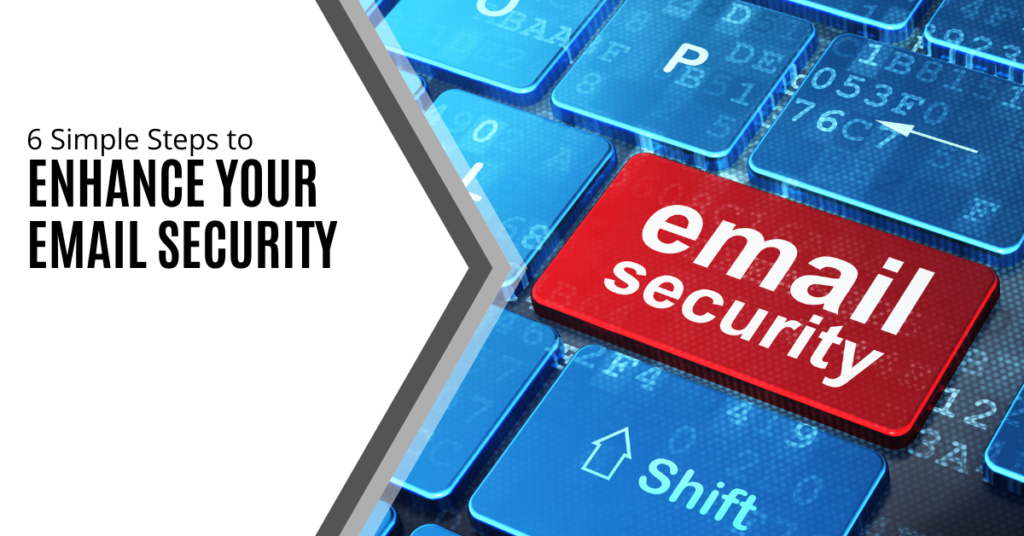|
Getting your Trinity Audio player ready...
|

Email Security: 6 Essential Steps to Safeguard Your Communications
Email is an indispensable tool for communication in both business and personal settings. However, it has also become a preferred target for cyber criminals. As cyberattacks grow more sophisticated, strengthening email security is increasingly crucial.
Studies reveal that 95% of IT leaders acknowledge the rising sophistication of cyber threats, with over half (51%) experiencing AI-driven attacks within their organizations. By implementing proactive security practices, you can protect sensitive information, prevent unauthorized access, and maintain secure communication channels. Here are six straightforward steps to boost your email security.
1. Create Strong, Unique Passwords
Passwords serve as the first defense for your email accounts. Weak passwords make it easy for cyber criminals to breach accounts. Prioritize strong, unique passwords that are challenging to guess.
Build Complex Passwords
A robust password should contain:
- A combination of uppercase and lowercase letters
- Numbers
- Special characters
Avoid commonly used words, phrases, or any information that can be easily guessed, such as your name or birthday. A complex password makes unauthorized access far more difficult.
Utilize a Password Manager
Remembering multiple complex passwords can be tough. A password manager helps generate and store unique passwords for each account, leaving you only one master password to remember. This adds security while simplifying your login process.
Refrain from Reusing Passwords
Using the same password across different accounts increases vulnerability. If one account is compromised, all other accounts with that password become accessible to attackers. Ensure that each email account has a distinct password to contain any potential breach.
2. Enable Two-Factor Authentication (2FA)
Adding two-factor authentication (2FA) to your accounts adds a second layer of security. Even if a password is obtained, 2FA requires a secondary verification step to grant access.
Select a 2FA Method
Common 2FA options include SMS codes, authenticator apps, and hardware tokens. SMS sends a code to your phone, authenticator apps generate time-sensitive codes, and hardware tokens provide physical codes. Choose the method best suited to your needs.
Apply 2FA to All Accounts
Enable 2FA for each email account. Most providers offer this feature, and setup typically takes just minutes. This single step provides significant additional protection.
3. Be Cautious with Attachments and Links
Attachments and links in emails are common sources of malware and phishing attacks. Clicking on malicious content can provide hackers with access to your device. Exercise caution when handling email attachments and links.
Confirm the Sender’s Identity
Always verify the sender before opening attachments or links. If you receive something unexpected from a known contact, reach out to them through a separate channel to confirm. For emails from unknown senders, consider not interacting with the content.
Use Antivirus to Scan Attachments
Scan all attachments with antivirus software before opening. While many email services offer built-in scanning, adding an additional layer of security through your own software enhances protection.
Avoid Suspicious Links
Be cautious with links that appear unusual or “too good to be true.” Hover over links to review the URL before clicking. If it appears suspicious, avoid clicking and navigate to the website directly through your browser.
4. Keep Your Email Software Updated
Regular software updates often include security patches that address vulnerabilities. Keeping your email software updated ensures that you benefit from the latest protections against cyber threats.
Enable Automatic Updates
Most email clients and operating systems offer an option for automatic updates. Enabling this ensures your software stays current, minimizing risks associated with outdated security.
Regularly Check for Updates
In addition to automatic updates, manually checking for updates is beneficial. This practice keeps your email software functioning smoothly and securely.
5. Encrypt Sensitive Emails
Encryption ensures that only the intended recipient can read an email. Even if intercepted, encrypted information remains secure.
Encrypt Emails with Sensitive Content
For any email containing sensitive information, consider encryption. Many providers offer built-in encryption, and third-party tools can provide end-to-end protection for additional security.
Inform Recipients
If sending encrypted emails, inform recipients about how to decrypt them safely. Providing instructions ensures the content remains protected throughout.
6. Monitor Your Email Activity
Regular monitoring of your email activity helps identify unusual behavior early on. Keeping an eye on your account allows you to take swift action if necessary.
Enable Activity Alerts
Many email providers offer alerts for unusual login attempts or account changes. Activating these notifications helps keep you informed about potential security issues.
Review Account Activity Regularly
Regularly reviewing login history and connected devices is crucial. If you notice unfamiliar activity, change your password immediately and assess your security settings.
Act Quickly if You Notice Suspicious Activity
If you detect unusual activity, respond promptly by updating your password, reviewing settings, and enabling extra security where possible.
Protect Your Email with Expert Security Solutions
Securing your email is vital for protecting your personal and professional information. Our advanced security solutions help reduce risks from email-based threats and phishing attempts.
Contact us today to learn more about our email security services.
Twintel has grown into an expansive, full team of IT services professionals, acting as the outsourced IT department of non-profits, small to mid-size businesses, and enterprise-level corporations in Orange County, across California, and nationally.
Today, it’s the strength and deep expertise of the Twintel team that drives positive outcomes for clients. Each of the support staff, technicians, and engineers works diligently each day to make sure that the companies served have the seamless, secure, and stable IT environments needed to allow them to pursue their organizational objectives.